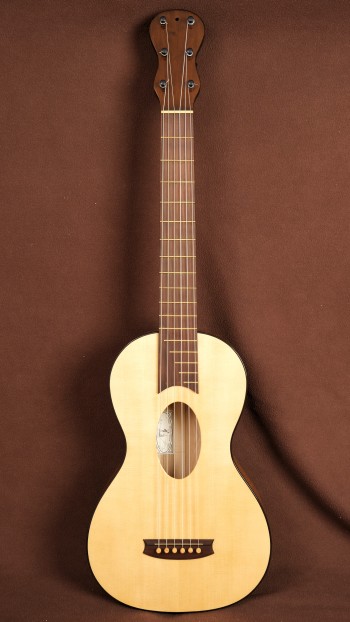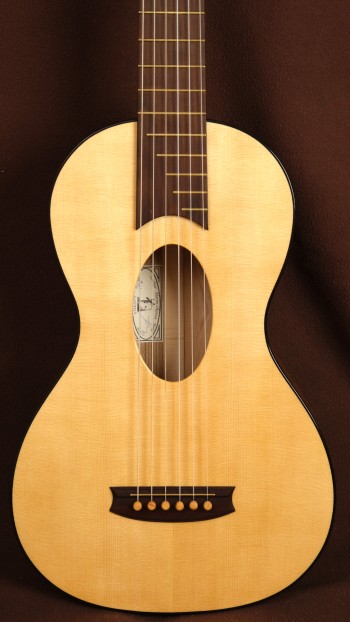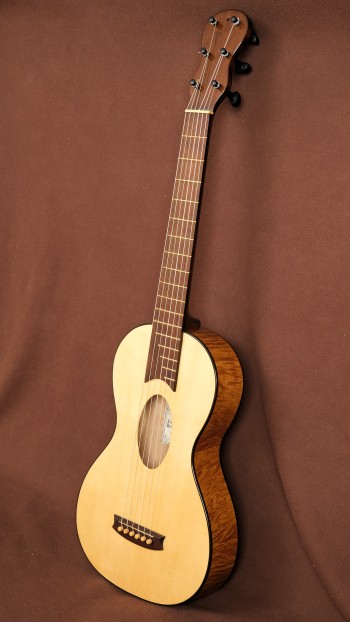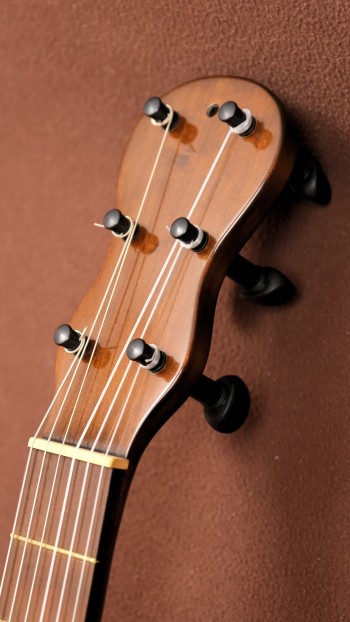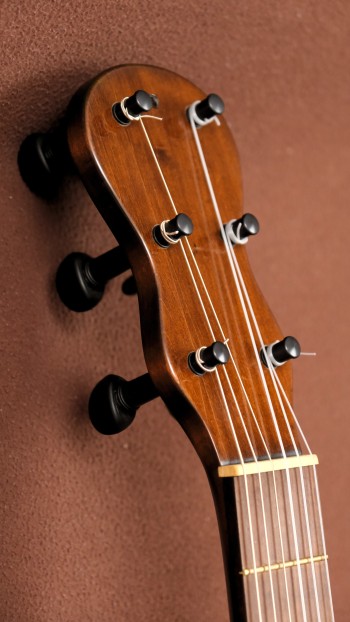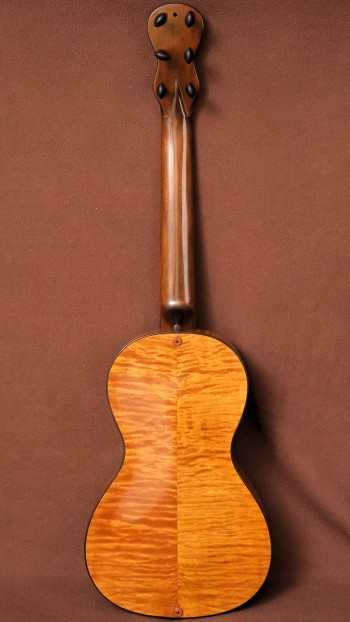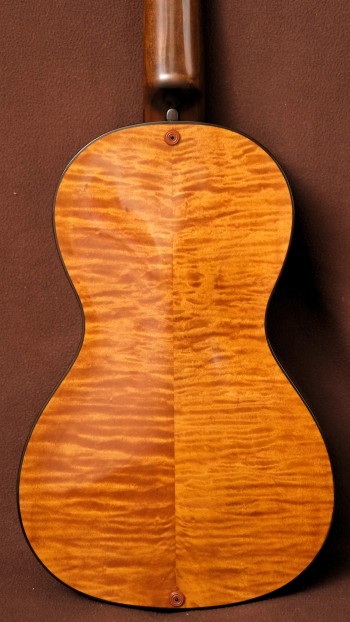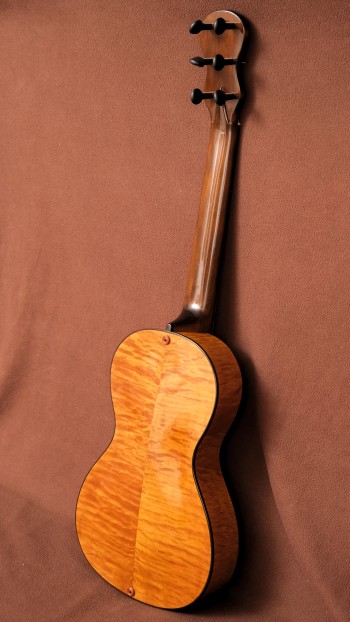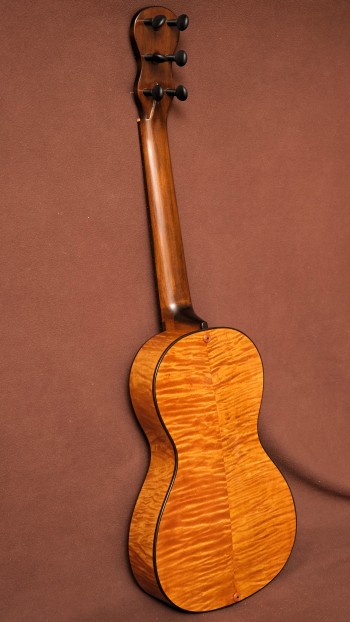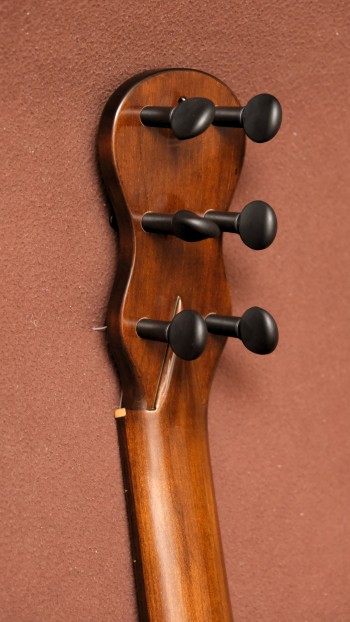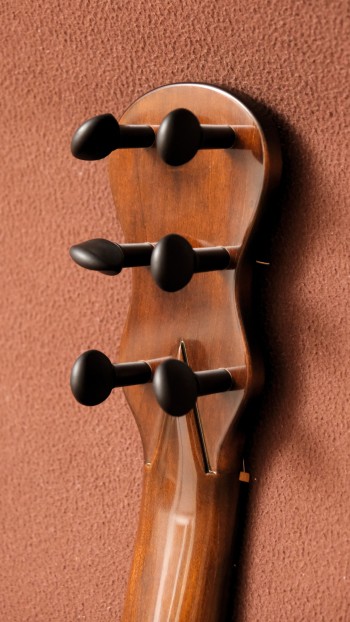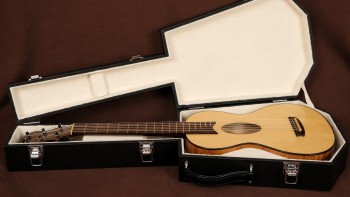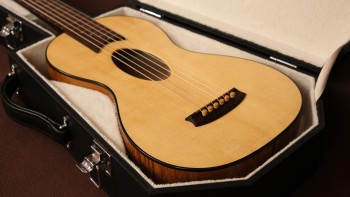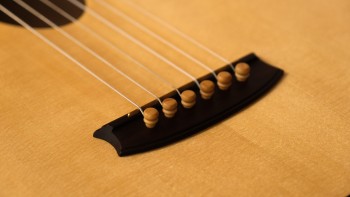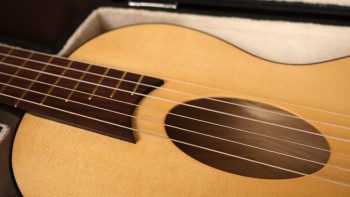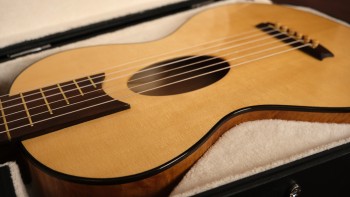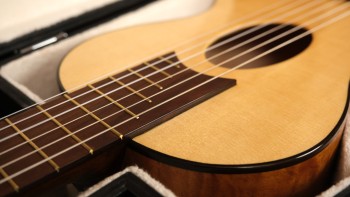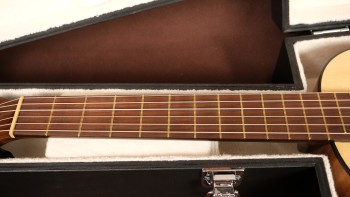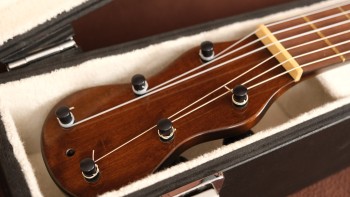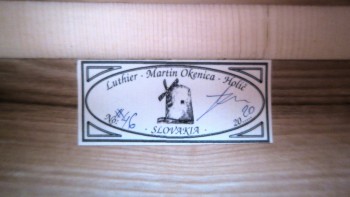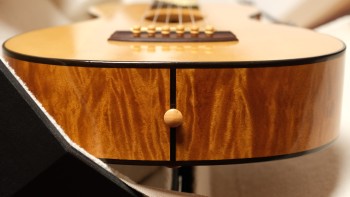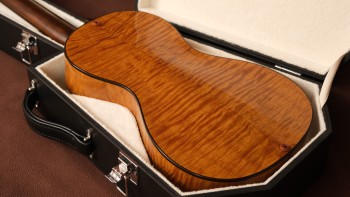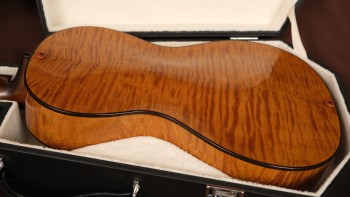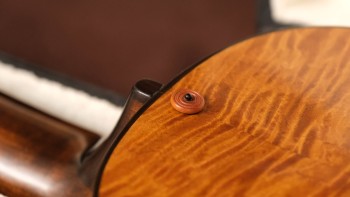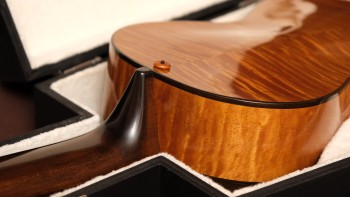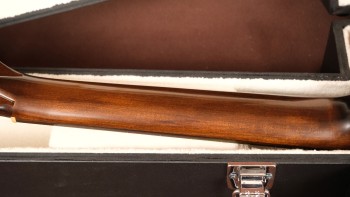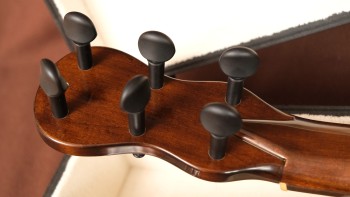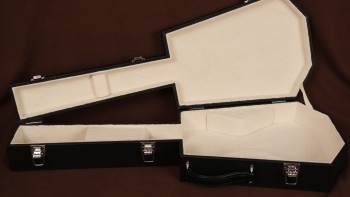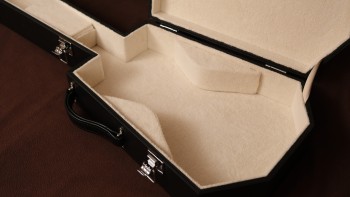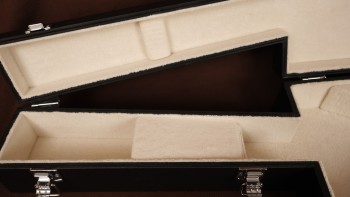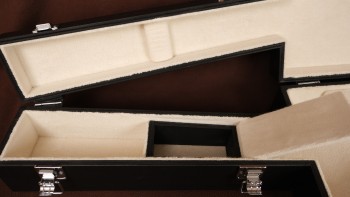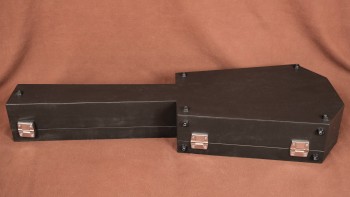| Type |
early romantic guitar |
| Bracing pattern |
parallel, Étienne Laprévotte (? - 1856) design ~1835 |
| Scale length |
645.0 [mm] |
| String spacing - at the saddle |
12.0 [mm] |
| String spacing - at the nut |
8.1 [mm] |
| String action - 12th fret, 1st string |
3.7 [mm] |
| String action - 12th fret, 6th string |
4.1 [mm] |
| Nut width |
48.0 [mm] |
| Length of 12th fret |
58.0 [mm] |
| Upper bout |
210 [mm] |
| Waist bout |
160 [mm] |
| Lower bout |
281 [mm] |
| Tuning mechanism |
Wittner internally mechanized pegs, gear ratio 1:8.5 |
| String action adjustment |
by adjusting the height of the nut and saddle |
| Additional neck reinforcement |
- |
| Number of frets |
17 |
| Fretwire |
T-profile |
| Armrest |
- |
| Weight |
1.08 [kg] |
| Top |
European spruce (Picea abies) |
| Back and sides |
European ash (Fraxinus excelsior) |
| Back and sides veneer |
flamed maple (Acer pseudoplatanus) |
| Braces |
European spruce (Picea abies) |
| Binding inner |
spruce (Picea) |
| Binding outer |
fumed European oak (Quercus robur) |
| Rosette |
- |
| Fingerboard |
fumed sweet cherry (Prunus avium) |
| Neck |
maple (Acer) |
| Heel |
maple (Acer) |
| Head |
maple (Acer) |
| Headplate |
- |
| Nut |
European boxwood (Buxus sempervirens) |
| Tuners / tuning pegs |
composite material |
| Bridge |
fumed blackthorn (Prunus spinosa) |
| Bridge pins |
European boxwood, plain |
| Endpin |
European boxwood (Buxus sempervirens) |
| Saddle |
brass |
| Frets |
brass |
| Armrest |
- |
| Glue |
traditional animal glue, modern synthetic glue (combination) |
